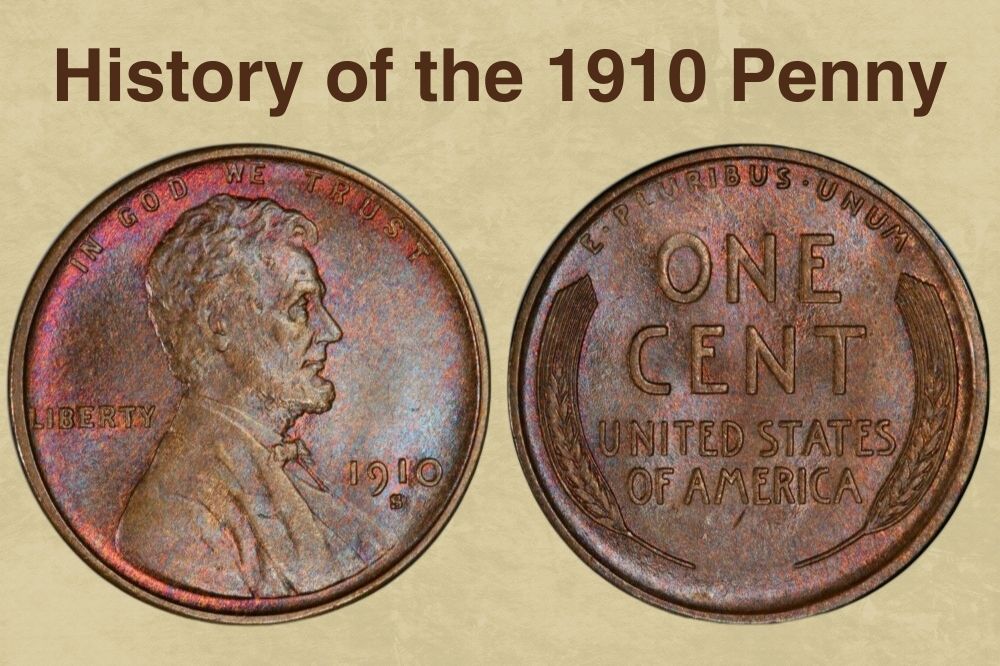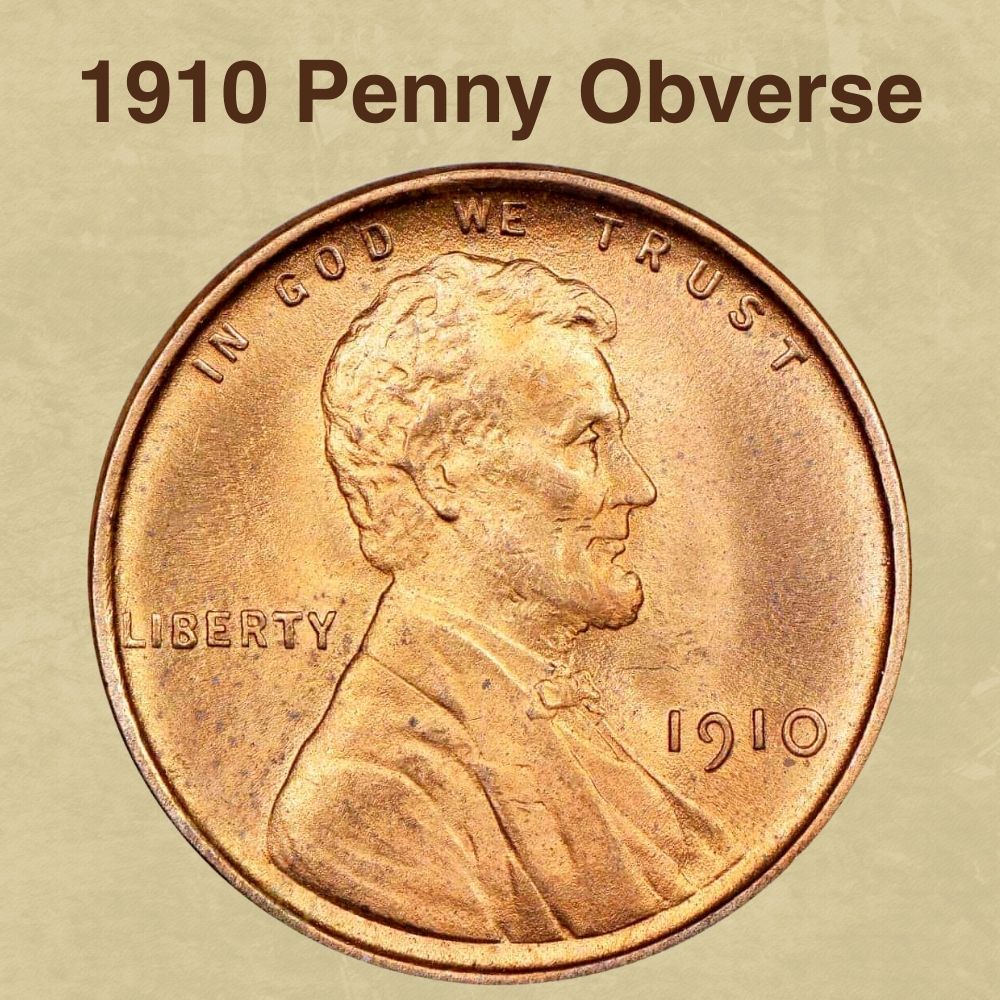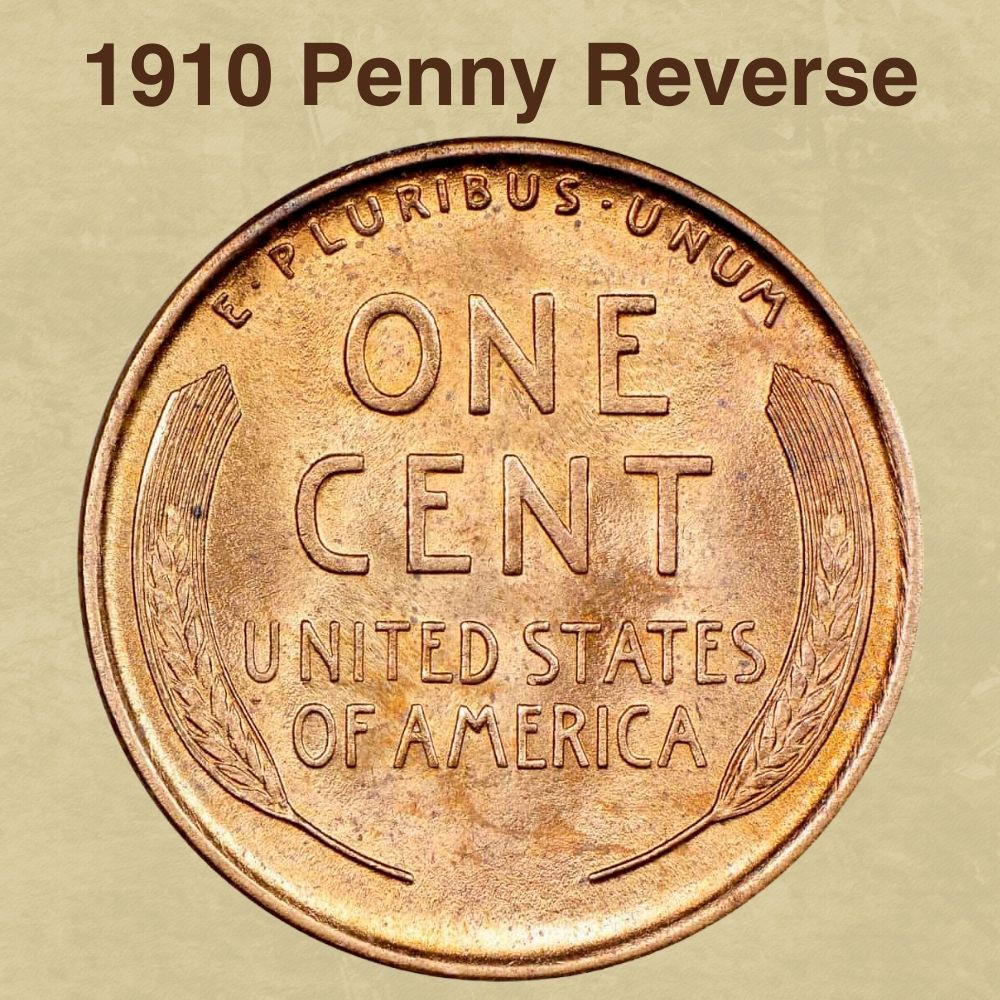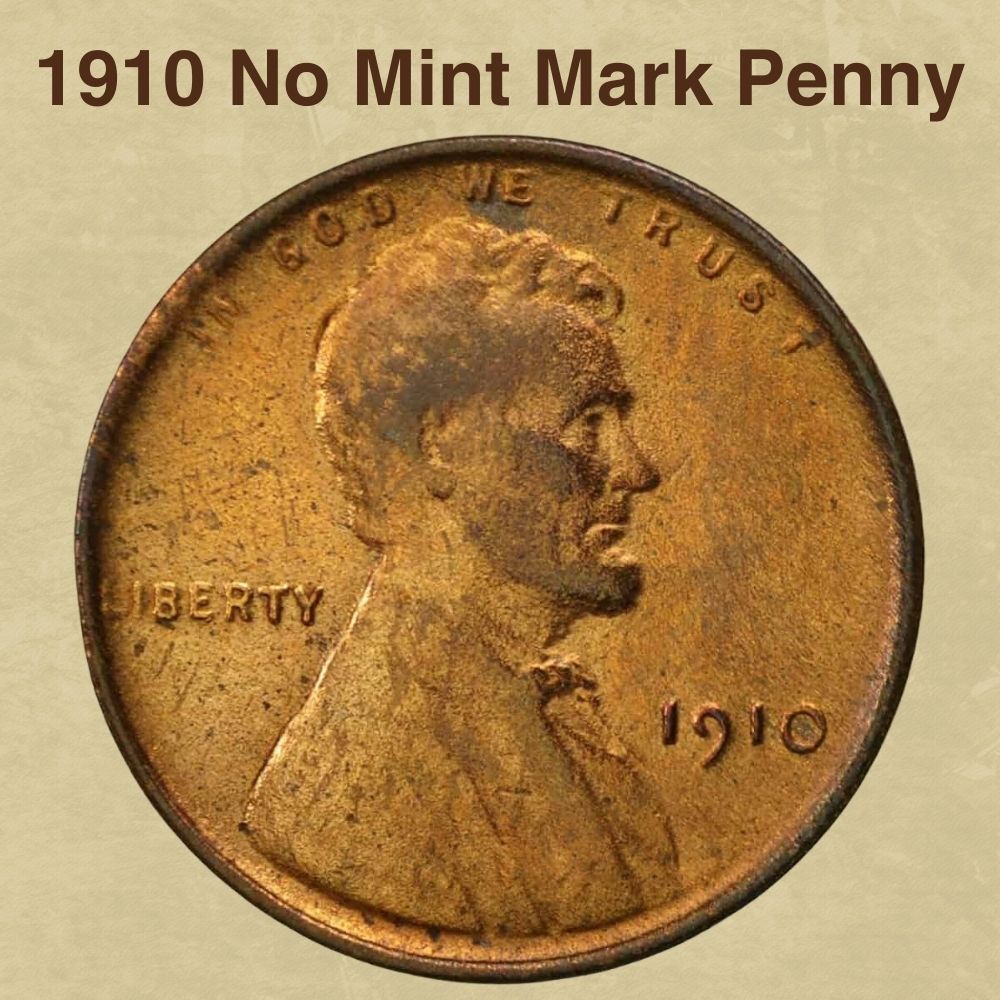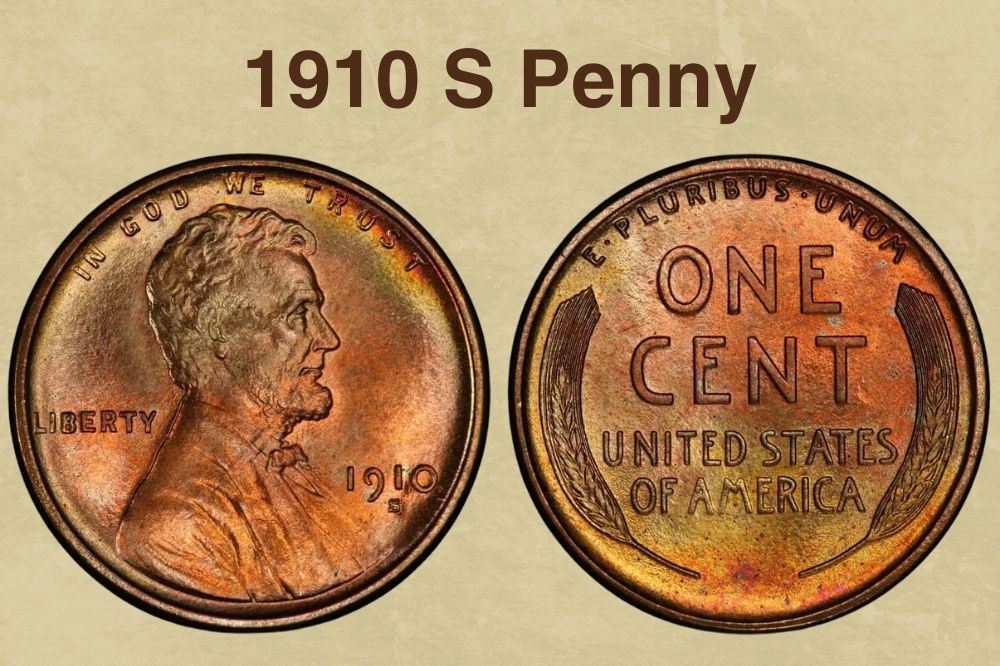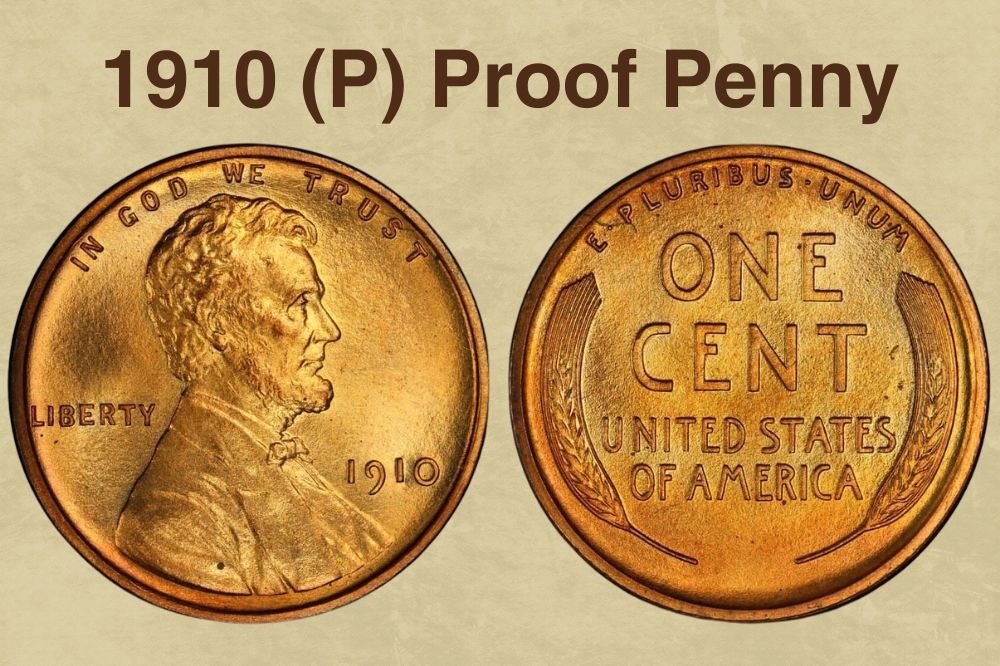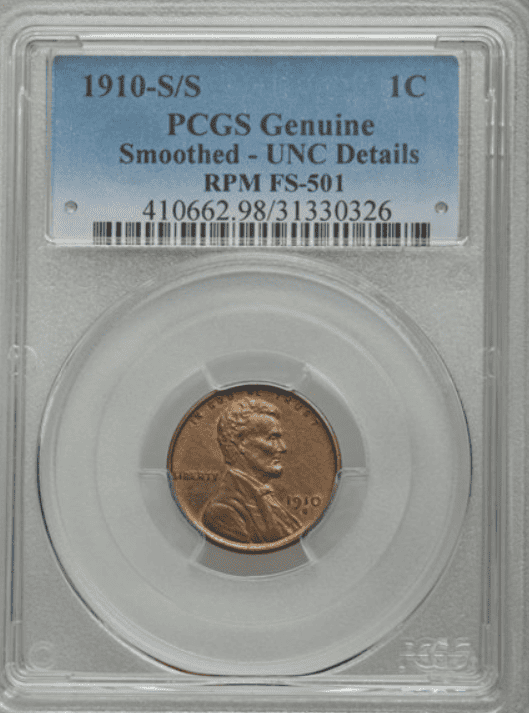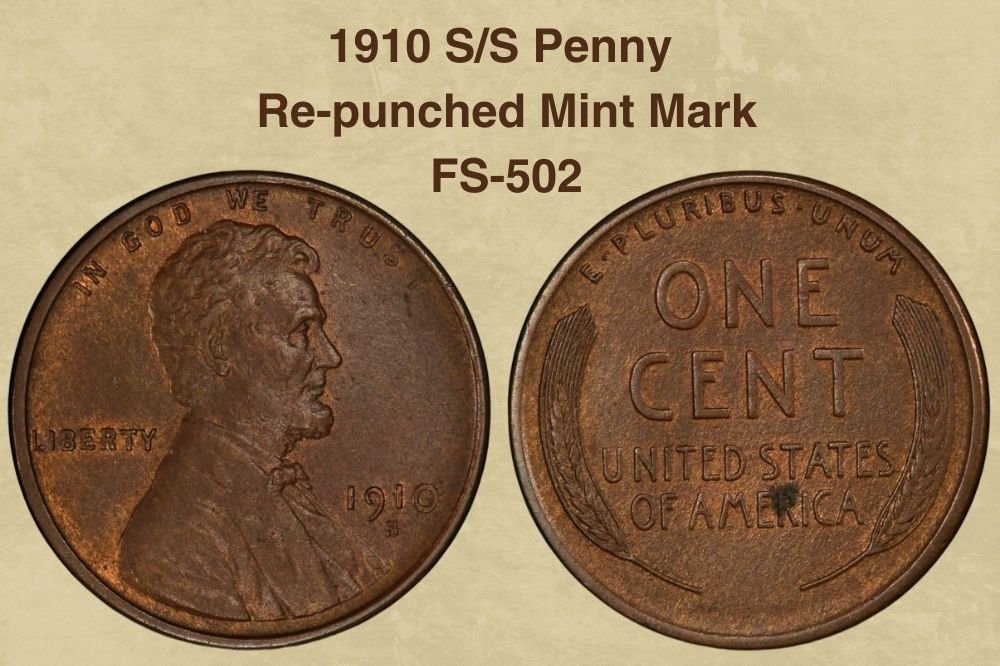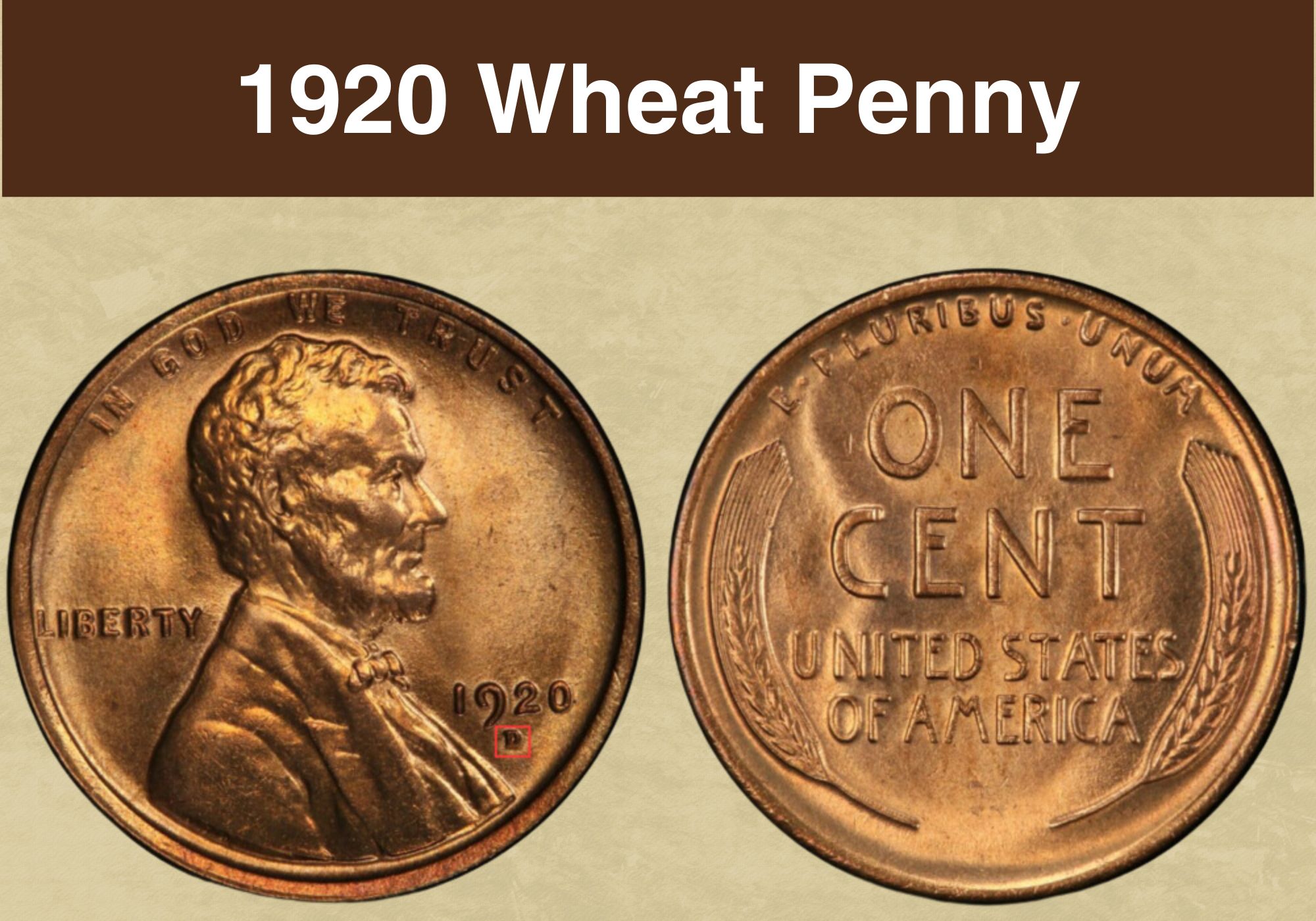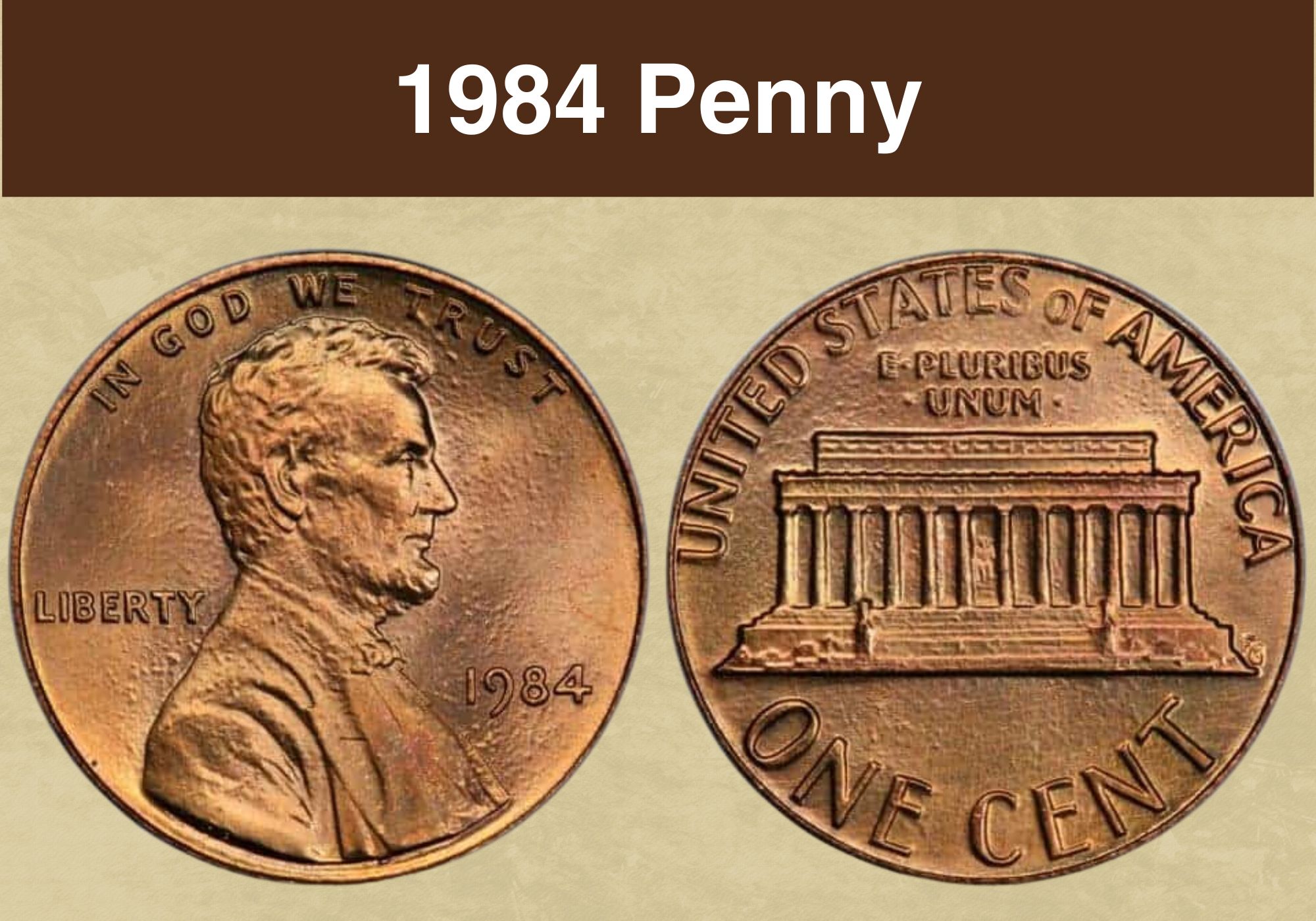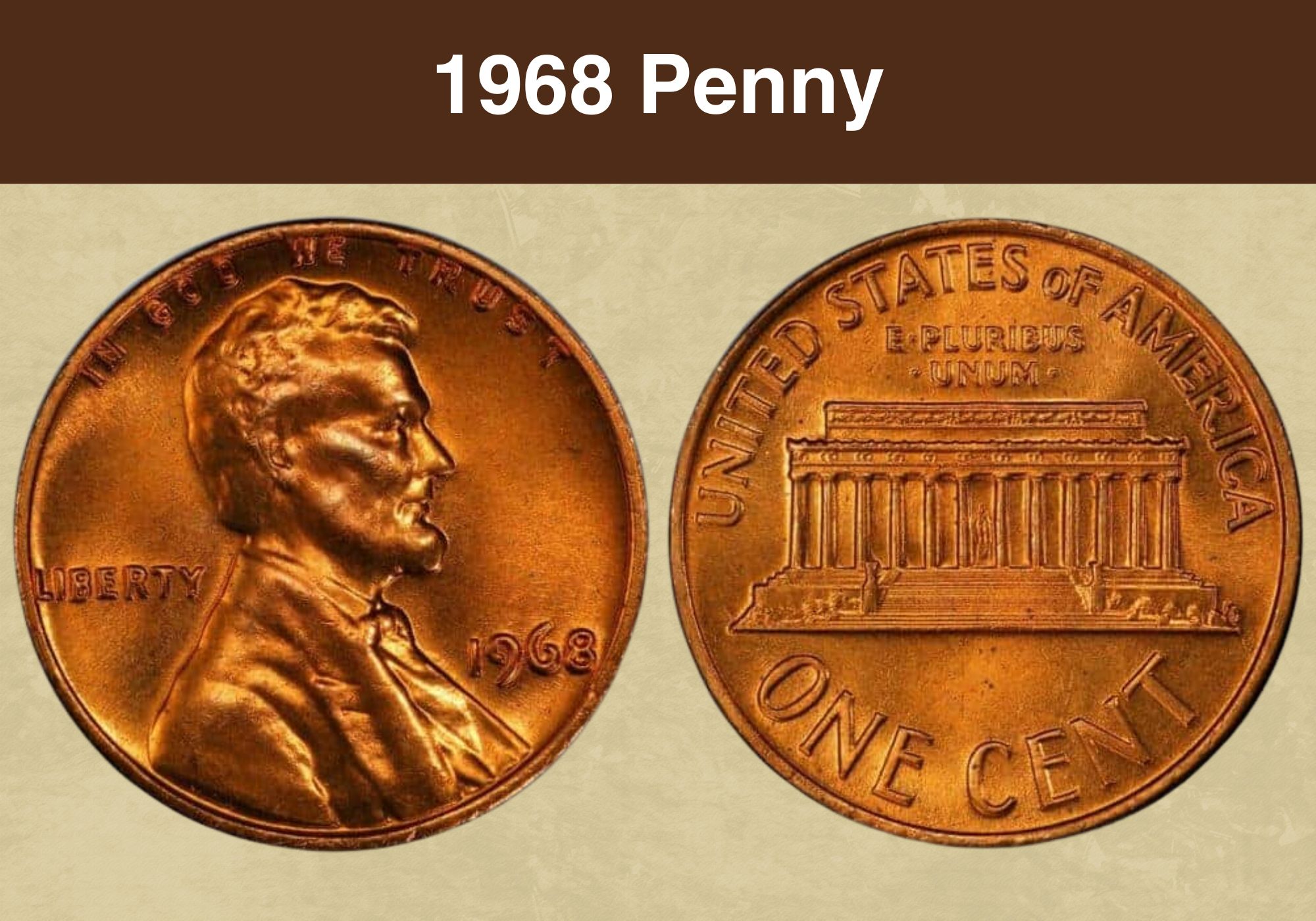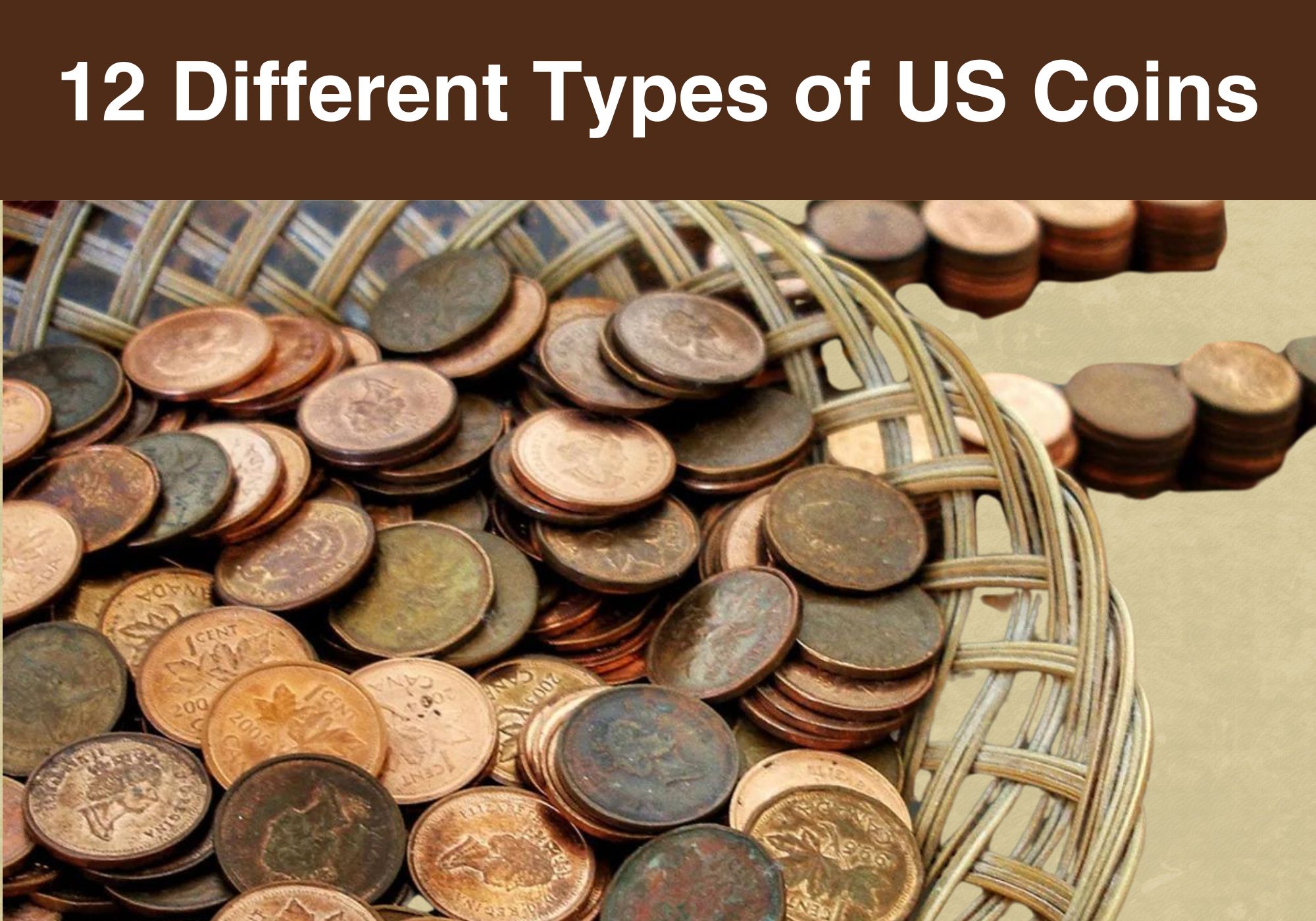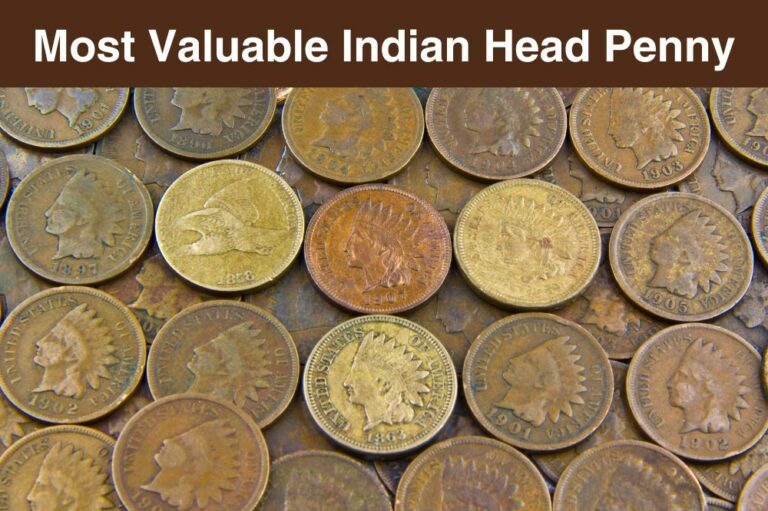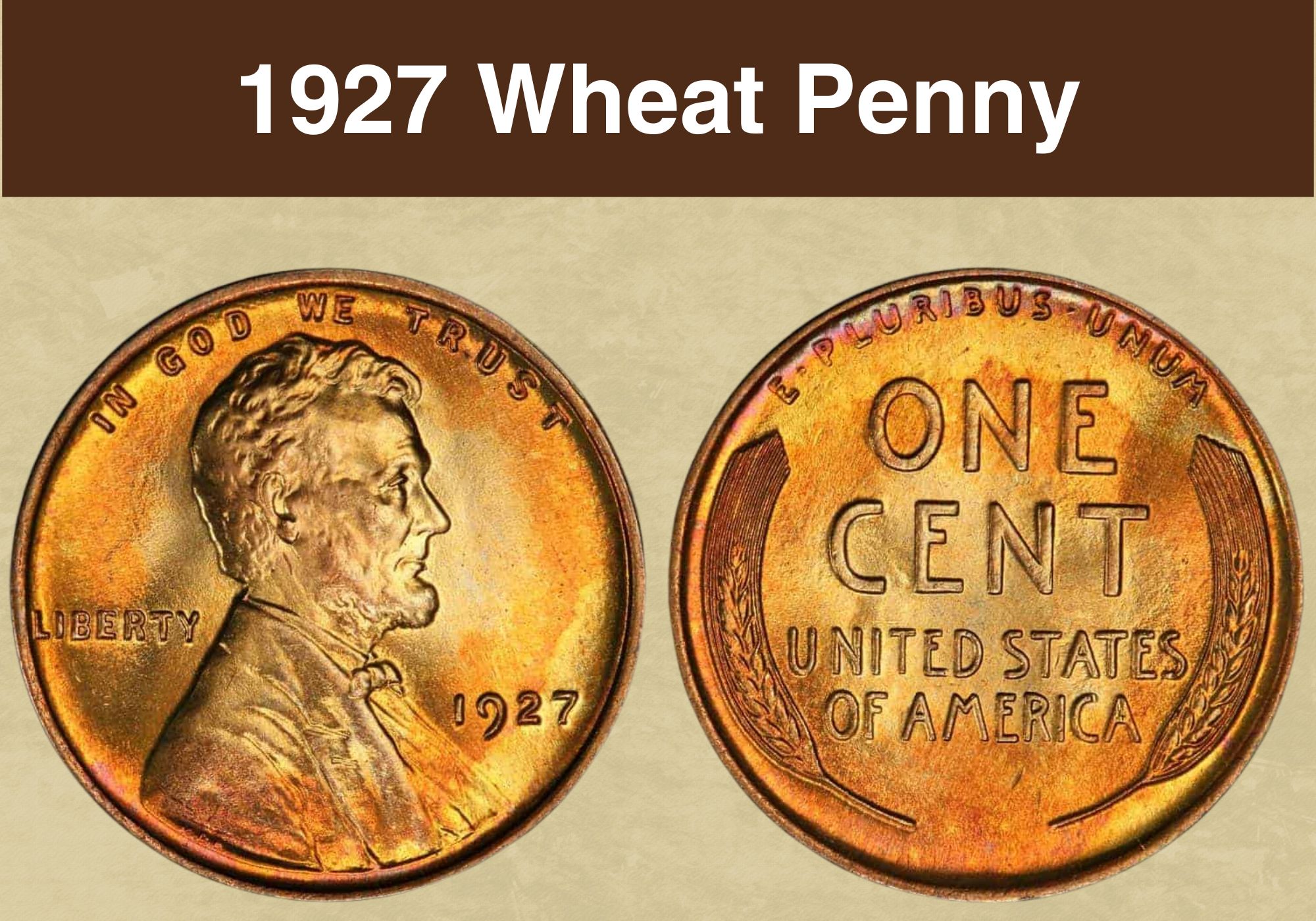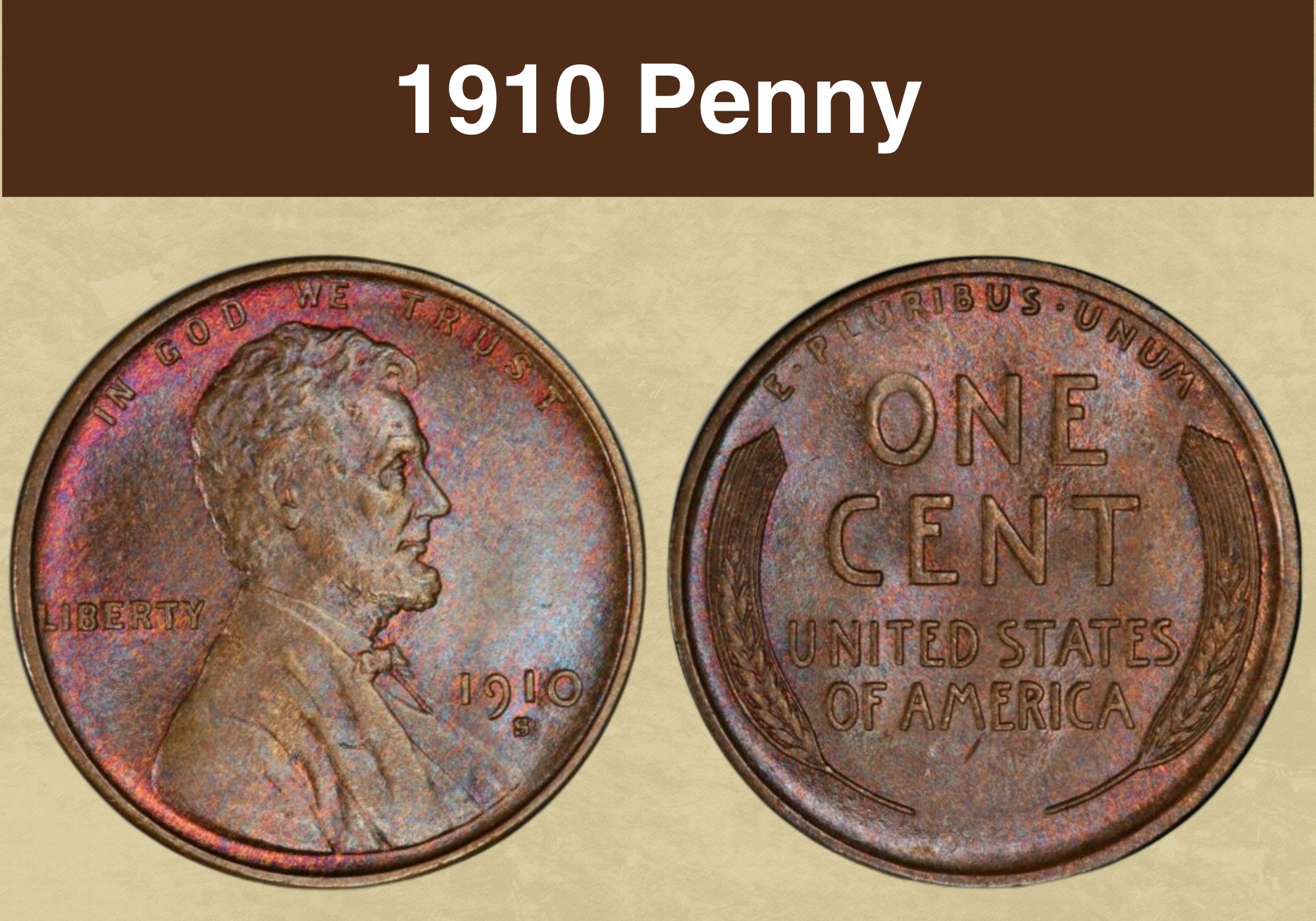
Coin Value Contents Table
Old coins can sometimes be worth much more than their face value. But just how much more depends on a range of different factors.
We’re going to find out more as we investigate the 1910 penny value. We’ll learn about the design of this interesting coin, and its history. And we’ll find out the details that could mean your coin is worth big money.
So if you’re ready to find out how much your 1910 penny might be worth, step this way!
1910 Penny Value Chart |
||||
| Mint mark | XF45 | MS60 | MS65 | MS67 |
| 1910 (P) No Mint Mark Penny Value | Brown: $5 | Brown: $30
Red and brown: $32 Red: $50 |
Brown: $150
Red and brown: $160 Red: $300 |
Red and brown: $1,500
Red: $2,250 |
| 1910 S Penny Value | Brown: $60 | Brown: $115
Red and brown: $125 Red: $135 |
Brown: $400
Red and brown: $400 Red: $775 |
Red and brown: $4,500
Red: $15,500 |
| PR60 | PR63 | PR65 | PR67 | |
| 1910 (P) Proof Penny Value | Brown: $375
Red and brown: $425 Red: $425 |
Brown: $675
Red and brown: $752 Red: $750 |
Brown: $1,150
Red and brown: $1,350 Red: $1,450 |
Brown: $4,750
Red and brown: $5,750 Red: $20,000 |
History of the 1910 Penny
The coin known as the Lincoln penny was launched in 1909, making the 1910 mintage just the second to be struck.
It gets its nickname from the image of Abraham Lincoln which appears on the obverse. That marked an historic first for US coins – never before had they borne the portrait of a real person. Until then, the heads sides of coins had carried the image of Lady Liberty.
The change marked the centenary of Lincoln’s birth. As the anniversary grew closer, public sentiment swung ever more strongly behind the idea of honoring the former president on the nation’s coinage.
You’ll also hear the 1910 penny referred to as a Wheat penny. That name refers to the image on the other side of the coin. The reverse is framed by two stylized ears of durum wheat.
While the image of Lincoln has remained largely unchanged over the years, the reverse has gone through several designs. Today’s Lincoln pennies are commonly known as “Shield cents” after the image of the Union shield on the tails side.
Today’s Lincoln pennies have the signature of their original designer, Victor David Brenner, at the bottom of Lincoln’s portrait. You’ll need to look closely to spot them, as they’re very small.
They’re not there at all on the 1910 pennies, though. Brenner had originally proposed signing his portrait of Lincoln, but was told that wouldn’t be acceptable. So instead he suggested adding his initials to the design on the reverse.
But when the first coins were issued, there was uproar. Some believed the initials were too prominent and that Brenner was advertising his work. And with coin production halted, the fastest way to deal with the perceived problem was to remove the initials altogether.
This was done over Brenner’s protests. It wasn’t until 1918 that his initials were reinstated, this time on the obverse in the position they still enjoy today.
Also read: 12 Most Valuable Lincoln Penny Worth Money
Features of the 1910 Penny
The Obverse of the 1910 Penny
The image of the assassinated president, Abraham Lincoln, is the main feature of the obverse of the 1910 penny.
It will be familiar to anyone who uses modern coins. It’s essentially the same portrait that appears on modern cents. And of all the images ever used on US coins, it’s the one that’s lasted the longest.
As we’ve already heard, it’s the work of Victor David Brenner, a Lithuanian artist from a family of metalworkers. Brenner emigrated to the US, later traveling to Paris to continue his artistic education. It was after his return to New York that he created the designs for the new Lincoln penny.
Brenner’s portrait shows Lincoln in profile facing to the right. Brenner later said that he had depicted the President as he imagined he would have looked reading to a child. That, he felt, would show him at his most lively and engaging.
Brenner is believed to have worked from several sources. One of those was an unpublished photograph of Lincoln taken at the studio of a photographer named Matthew Brady.
The familiar motto “IN GOD WE TRUST” is inscribed above the portrait, arching to follow the curve of the upper coin edge. The word “LIBERTY” is to the left of the portrait, while the date is further down on the right.
In 1910, pennies were struck at the Mint facilities in Philadelphia and San Francisco. As the original facility, Philadelphia didn’t use a mint mark. But coins struck in San Francisco will have a small “S” beneath the date.
The Reverse of the 1910 Penny
Brenner also prepared the design for the reverse of the first Lincoln pennies. The image of two ears of durum wheat was used between 1909 and 1958. 1959 saw it replaced to mark 150 years since Lincoln’s birth. The new design featured the Lincoln Memorial in Washington D.C.
The ears of wheat weren’t Brenner’s first design for the coin. He’d originally prepared an image of a tree branch, but this was felt to be too similar to French coins of the same era. He was sent back to the drawing board with the instruction to produce a simple image.
The ears of wheat are certainly that, depicted with clean lines and arcing gracefully to frame the coin. Between them, the denomination, “ONE CENT”, is inscribed in large font that dominates the design.
The country name follows below the denomination, in smaller lettering. And the Latin motto “E PLURIBUS UNUM” curves parallel to the upper coin edge. The words mean “From the many, one” and refer to the genesis of the USA as a union of states.
Other Features of the 1910 Penny
The penny struck in 1910 is made from bronze. The alloy is 95 per cent copper, with the remainder a mixture of tin and zinc. The coin weighs 3.11 grams and measures 19 millimeters in diameter.
Being mostly copper, individual coins vary in color, depending on how much they’ve been handled or exposed to the air. Coins that have had minimal handling will be a rich red shade. Those that have been handled more will appear brown.
Coin grading agencies classify each coin as red, red and brown, or brown. To be red or brown, a coin must be the same color over at least 95 per cent of its total surface area. If there’s more of a mixture of shades, it’s classed as red and brown.
Generally speaking, collectors will pay more for a red coin than a coin of the same quality that’s red and brown. And they’ll pay more for a red and brown example than for a brown one.
For some mintages of Lincoln pennies, only red coins are worth much more than their face value. But 1910 pennies of all colors can be worth good money.
You can find out more about how to grade the color of your Lincoln penny in this YouTube video from CoinOpp.
Also read: 13 Most Valuable Wheat Penny Worth Money
1910 Penny Grading
| # | Grade |
|---|---|
| 1 | Basal State-1 |
| 2 | Fair |
| 3 | Very Fair |
| 4, 5, 6 | Good |
| 7, 8, 10 | Very Good |
| 12, 15 | Fine |
| 20, 30 | Very Fine |
| 40 | Extremely Fine |
| 50 | About Uncirculated |
| 60 | Mint State |
| 65 | Mint State |
| 70 | Mint State |
Please check our grading guides to know your coin scale, It’s the necessary step to know the exact value of your coin.
Check out now: How to Grade Lincoln Wheat Penny?
1910 Penny Value Guides
1910 No Mint Mark Penny Value
The Philadelphia Mint facility struck almost 147 million pennies in 1910. Demand was high, and banks continually requested more coins.
You can tell if your 1910 penny was struck in Philly by looking at the obverse. If there’s no letter beneath the date, it’s a Philadelphia coin.
The value of an individual coin will depend on its condition and color. Coin condition is judged on a scale from 1 to 70, with 70 used for a perfect example. Coins that have never been circulated are known as “mint state” or “MS”, and are graded 60 and above.
A brown 1910 Philadelphia penny graded XF45 (the letters stand for “extremely fine”) will be worth around five dollars. At MS60, that increases to $30. And if you want a coin graded MS65 – the lowest level at which coins are termed “gems” – you’ll need to pay around $150.
The independent coin grading agency, the PCGS, provides value estimates for red and brown coins only at grades MS60 and above. Unusually, it values a red and brown MS60 example at $32; that’s $2 lower than a brown coin. That may simply be because one or other value needs to be updated.
At MS65, a red and brown coin carries a small premium – $10 – over a brown example. Values rise to $375 at MS66. And for red and brown 1910 Philadelphia pennies, the top grade at present is MS67. The PCGS has certified just three coins at this level, and values them at $1,500 each.
Red pennies are the crème de la crème. Values start at $50 for a coin graded MS60, and it’s double that for an MS63 example. A gem grade MS65 is worth $300 – in theory, that’s slightly less than the red and brown equivalent.
But at MS67, the premium for the red color is significant. A coin at that level is valued at $2,250. And the finest known examples are graded at MS67+. To date, 24 pennies have been certified at that level by the PCGS, and each one is valued at an impressive $8,500.
1910 S Penny Value
The San Francisco 1910 pennies were produced in considerably lower numbers. The mintage was just over six million. So at most grades, an “S” mint mark below the date means your coin is worth more than a Philadelphia penny.
A brown coin graded XF45 is worth around $60 – twelve times the value of the Philadelphia equivalent. A mint state coin will be worth three figures – at MS60, the value is $115.
Thirty brown 1910-S pennies have been certified at MS65 by the PCGS, and they’re each worth $400. And to date, a sole brown coin has been graded at MS65+. Unfortunately, there’s no public sales information for that one, and the PCGS hasn’t estimated its value.
For red and brown coins, PCGS values range from $125 at MS60 to $4,500 at MS67. And for red examples, the range is from $135 at MS60 (likely to be an under-estimate) to an astonishing $55,000 at MS67+.
1910 (P) Proof Penny Value
Proof pennies were struck on special planchets using specially prepared dies. They were intended for coin archives and collectors, rather than for circulation. And while modern proofs are produced in large numbers, in 1910, proof mintages were low.
The 1910 proof penny was struck at the Philadelphia Mint facility. And only 2,405 of them were ever produced. That makes them hard to come by, and very collectible.
A brown proof 1910 penny graded MS60 is worth around $385. If it’s red and brown, or red, that value will be around $425.
For brown coins, the top grade certified to date is MS67. Three coins have been awarded that grade, and they’re each worth $4,750.
For red and brown examples, quality also tops out at MS67. The value for the five coins certified at that level is $5,750 apiece.
And the finest known red 1910 proof penny is a single coin graded MS68. That is valued at a staggering $175,000.
Also read: 17 Most Valuable Indian Head Penny Worth Money
Rare 1910 Penny Errors List
1910 S/S Penny, Re-punched Mint Mark, FS-501
Some of the pennies struck in San Francisco in 1910 are marked with not one but two mint marks. They’re both “S”s, and there are two different die varieties.
The variety known as FS-501 has the first, fainter S just below the second. Values depend on the color and condition of the coin.
A brown penny will be worth from $30 (grade 4) upwards. At MS64, the value increases to $550. A red and brown version of the same variety will be worth anything from $285 (MS60) to $2,200 (MS64).
1910 S/S Penny, Re-punched Mint Mark, FS-502
In the variety known as FS-502, the first, fainter S is struck slightly higher than the second. Values are slightly lower for brown and red and brown coins than for the FS-501 variety.
Brown pennies start at $28 (grade 4) and climb to $425 at MS64. For red and brown pennies, the range is from $225 (MS60) to $1,400 (MS66).
But this error features on a good number of red pennies too. Values for those start at $300 at MS60, and top out at $20,000 for a sole example at MS67.
This YouTube video from Couch Collectibles looks at re-punched mint marks on 1910 pennies. And it also looks at how the value of 1910 pennies is affected by their condition.
Also read: 11 Most Valuable Wheat Penny Errors
Where to Sell Your 1910 penny ?
Now that you know the value of your coins, do you know where to sell those coins online easily? Don’t worry, I’ve compiled a list of these sites, including their introduction, pros, and cons.
Check out now: Best Places To Sell Coins Online (Pros & Cons)
FAQs
How much is a 1910 penny worth?
Even 1910 pennies in poorer condition can be worth much more than their face value. Proof coins are particularly valuable, with prices starting at several hundreds of dollars.
The condition, mint mark, and color of a coin will be key to its value. Even a difference of one point on the grading scale can make a huge difference to how much a coin is worth.
Regular pennies with an S mint mark are more valuable than those at the same grade without a mint mark. (Bear in mind, though, that proof pennies don’t have a mint mark either.)
All other things being equal, red coins are generally more valuable than red and brown, which are in turn more valuable than brown.
Mint errors, like repunched mint marks, will add a premium to the value of the coin too.
What is special about a 1910 penny?
1910 was only the second year that Lincoln pennies were produced. And the Lincoln penny is a special coin for a couple of reasons.
It was the first series of US coins ever to feature the image of a real person. All previous coins had featured legendary figures like Lady Liberty on the obverse. And the portrait of Lincoln that appears on it is the longest-running design in US coin history.

